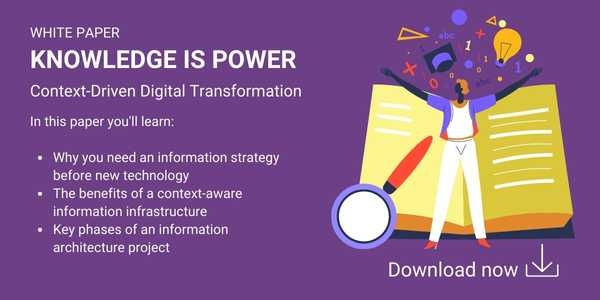Analytics is undergoing a revolution in tools, technologies, applications and adoption. The industry is rapidly evolving and organizations are investing large amounts of funding and resources in trying to turn data and analytics into competitive advantage.
The challenge is typical during a time of rapid change – marketing hype hijacks the promise and venture backed startups make unsustainable or unreasonable claims. Consultancies learn on client time and investments are hastily made out of fear of falling behind the competition. Against this backdrop, real disruption is taking place and value chains are being reconfigured.
In this four-part recorded webcast series our industry experts discuss critical issues and challenges, trends in technologies and the impact on business and public sector organizations.
Part 1. The Business Potential of Machine Learning and Cognitive Computing
As programs and devices get smarter, special purpose applications will become more adaptable and self-configuring. Algorithms will improve as they are used and will contain mechanisms to optimize over time. This is referred to as “machine learning” - a broad concept representing dozens of approaches and algorithms for improving how technology performs. Some of these are fully automated and “black boxes” and others require structure and configuration to an organization’s information domain. This class of technology is related to software becoming ever more user friendly to the point where systems provide the appearance of understanding human intent. This emerging field is called “Cognitive Computing” and holds great promise for all fields. IBM Watson and Apple’s Siri are examples in the space. This session will explore what is possible versus what is practical in this emerging space.
Part 2. Mining Business Insights with Big Data Analytics and the Internet of Things
With the Internet of Things, distributed intelligence will allow for automated replenishment which will change the nature of the supply chain and require companies to add new services in order to stay relevant. Value will be less in the physical nature of products and more in configured functionality. Systems will be optimized and processes will become more autonomous. Data exhaust from product interactions will become the source of value for businesses that have relied on revenue from commodity goods in the past. Optimization of multi-vendor ecosystems of sensors and equipment will provide new sources of value and efficiency. Understanding, interpreting and leveraging data that drives these processes and that are emitted by devices and systems of devices will be an enormous challenge for enterprises that are struggling to deal with the current deluge of information. Our panel of experts will discuss challenges facing enterprises and how mitigate risks.
Part 3. Metrics for Measuring the Customer Experience and Digital Marketing Success
One area that is receiving an inordinate amount of attention and resourcing is that which drives marketing and online commerce. Understanding and serving customers is being facilitated by thousands of new tools and technologies. Marketing leaders in enterprises of all sorts are facing a perfect storm of unprecedented complexity, rapid shifts in customer behaviors, and enormous amounts of funding being poured into technology startups serving customer experience and commerce needs. One veteran of the industry recently said “when there is confusion, lots of money can be made. Once people figure things out, there’s no more opportunity”. This cynical observation contains the subtext that when the marketplace is uneven and opaque, customers end up paying more for solutions than the fundamental value may justify. As the industry matures, competition increases and value differentiators become clear and there is no longer an artificial premium caused by uneven industry maturity. This session will seek to clarify the issues tools and technologies to assist organizations as they make strategic decisions.
Part 4. Using Business Analytics to Drive Higher ROI and 0rganizational Change
Analytics is particularly challenging because the specialized nature of tools and approaches make the business value less accessible to business users. Frequently an intermediary with technical and business analysis skills is required to design, deliver and interpret data produced by multiple applications. Add to this the increasing complexity of the technology ecosystem with greater numbers of potential data sources and new approaches for leveraging data and what is possible is rapidly outstripping what is practical and cost effective. Business Intelligence and analytics dashboards need to be designed by experts with business leadership providing the strategic requirements. However, it is difficult to find this combination of skill sets in an efficient and cost effective structure. In many cases, specialist consulting firms are brought in to execute on projects with the enterprise becoming increasingly dependent on services or end users do not understand how to effectively use tools that are set up for their analysis and decision making. We will explore approaches for improving organizational maturity and building competencies at the points of greatest business need.

